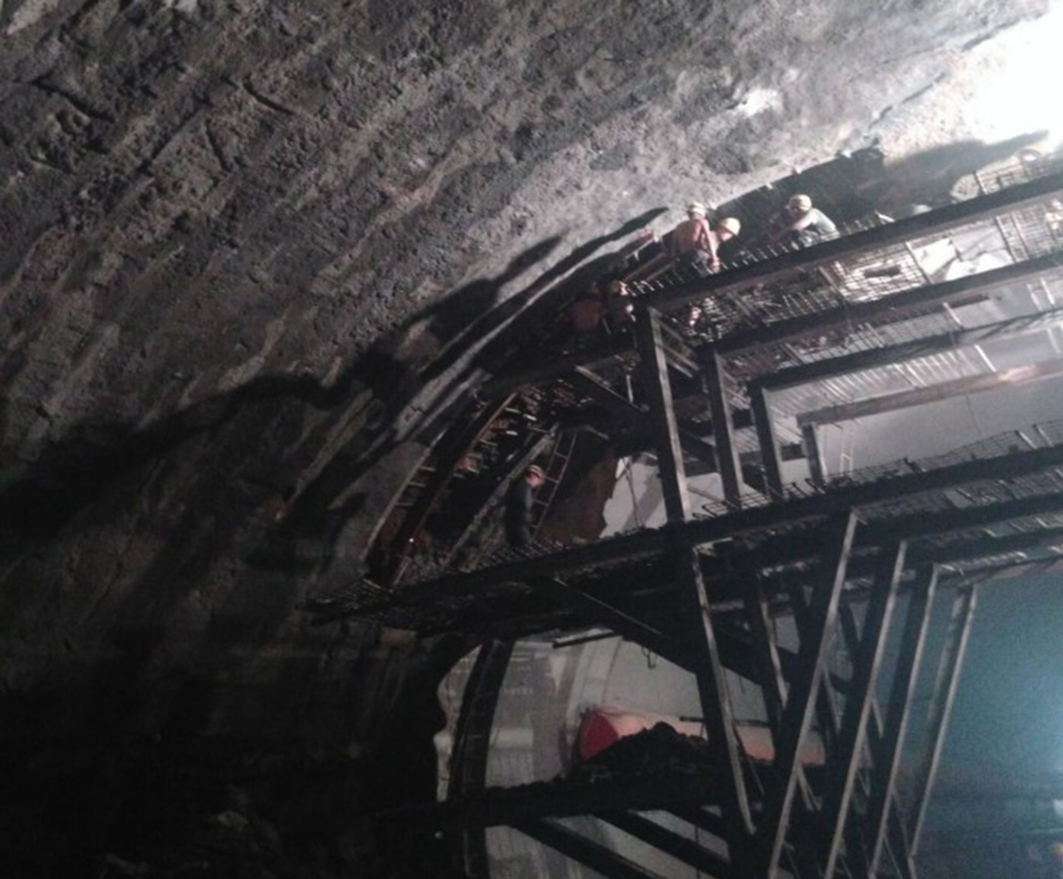Force analysis and treatments for Lidong tunnel of Renxin expressway crossing karst caves
1
Guangdong Nanyue Transportation Investment and Construction Co., Ltd, China
2
Shenzhen Expressway Operation and Development Co., Ltd, China
3
Poly ChangDa Engineering Co., Ltd, China
4
School of Civil Engineering, Chongqing Jiaotong University, China
5
State Key Laboratory of Mountain Bridge and Tunnel Engineering, China
Submission date: 2023-09-22
Final revision date: 2023-10-30
Acceptance date: 2023-11-21
Publication date: 2024-04-02
Corresponding author
Kai Zhu
Guangdong Nanyue Transportation Investment and Construction Co., Ltd, Guangdong Nanyue Transportation Investment and Construction Co., Ltd, Guangzhou, China
Guangdong Nanyue Transportation Investment and Construction Co., Ltd, Guangdong Nanyue Transportation Investment and Construction Co., Ltd, Guangzhou, China
Archives of Civil Engineering 2024;70(1):693-705
KEYWORDS
TOPICS
ABSTRACT
There are several large karst caves at haunch part of the Lidong Tunnel during construction, together with inrush water due to high pressure within these caves. In light of it, this paper takes YK342+113 section as an example and adopts finite difference software FLAC 3D, so as to analyze tunnel deformation when crossing karst caves under six different working conditions, including with or without karst cave, before and after karst treatment, along with support locations. According to analysis results: (1) the wall rock mainly had deformation at tunnel vault when evacuating at the third bench, which is a critical monitoring focus for tunnel construction; (2) karst cave treatment contributed to better conduct forces on both sides of wall rock, thus reducing vault settlement, while not affecting horizontal convergence and upturn of vaults; (3) treatment measures were proved to be effective in minimizing wall rock deformation by comparing deformation curves under different conditions; (4) after treatment measures, the angular points within the cave’s chamber had stress concentration, which might cause secondary collapse. Field monitoring data revealed that the final settlement of the tunnel vault was relatively consistent with the numerical analysis results, with a distinct change in daily settlement after initial support construction. By integrating numerical analysis and field monitoring, the rationality of the karst treatment plan was fully verified, providing a valuable reference for similar projects.
We process personal data collected when visiting the website. The function of obtaining information about users and their behavior is carried out by voluntarily entered information in forms and saving cookies in end devices. Data, including cookies, are used to provide services, improve the user experience and to analyze the traffic in accordance with the Privacy policy. Data are also collected and processed by Google Analytics tool (more).
You can change cookies settings in your browser. Restricted use of cookies in the browser configuration may affect some functionalities of the website.
You can change cookies settings in your browser. Restricted use of cookies in the browser configuration may affect some functionalities of the website.




